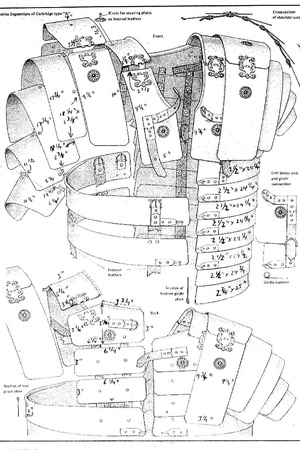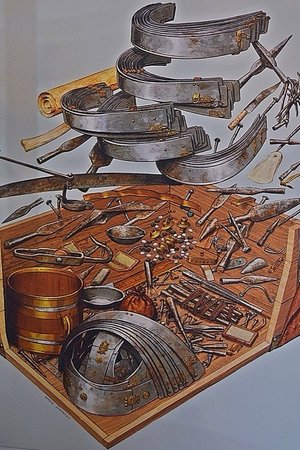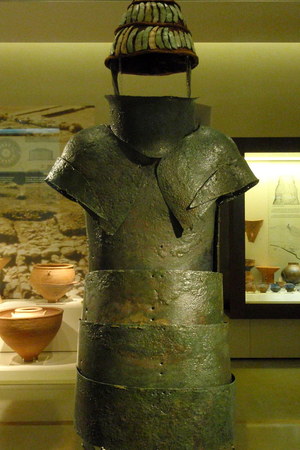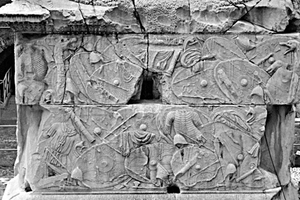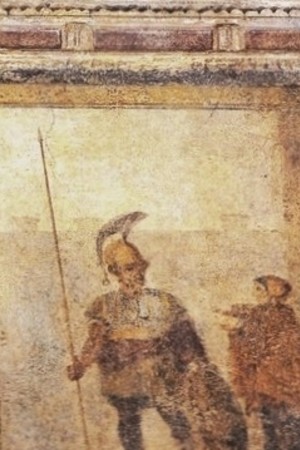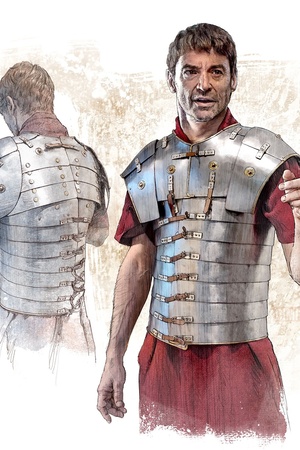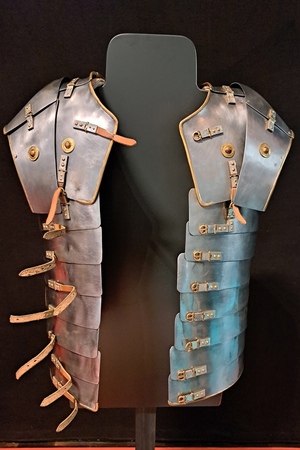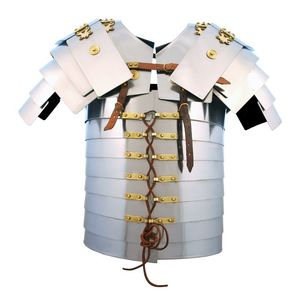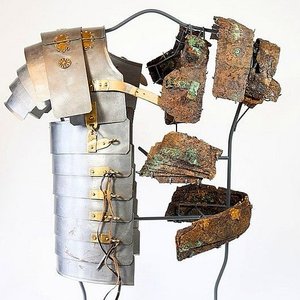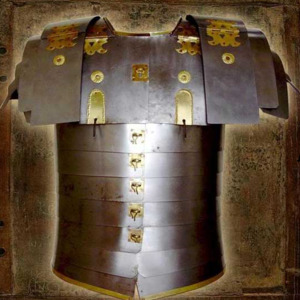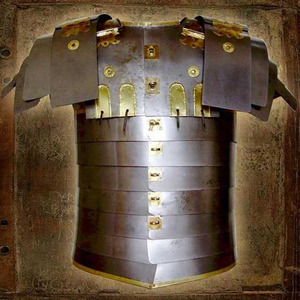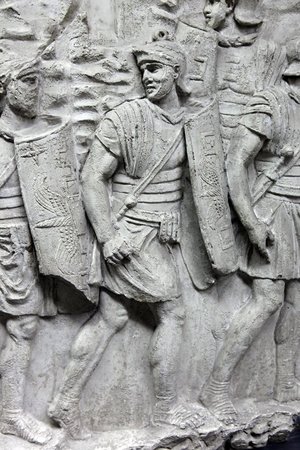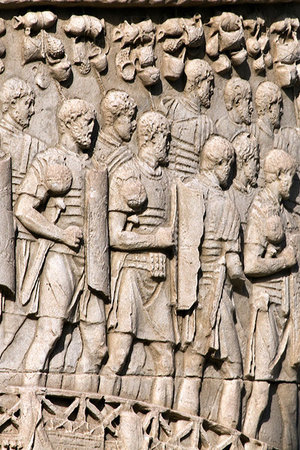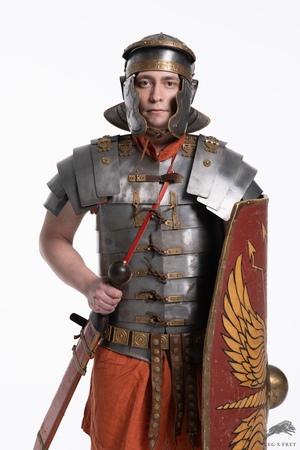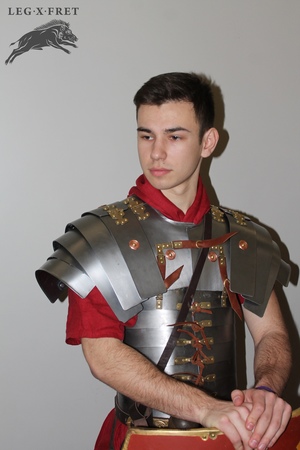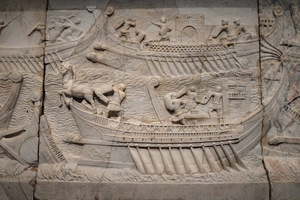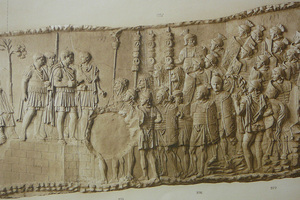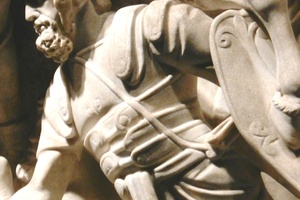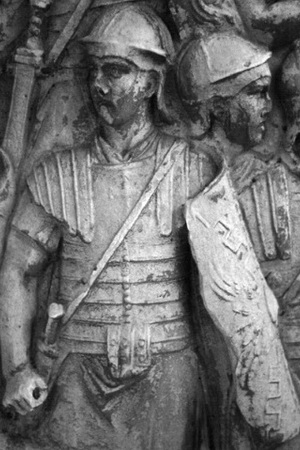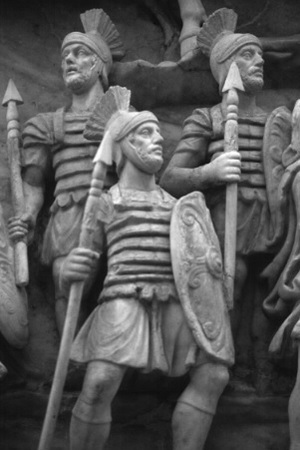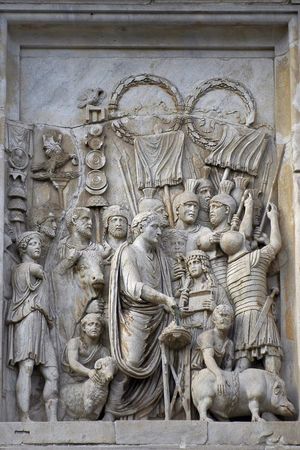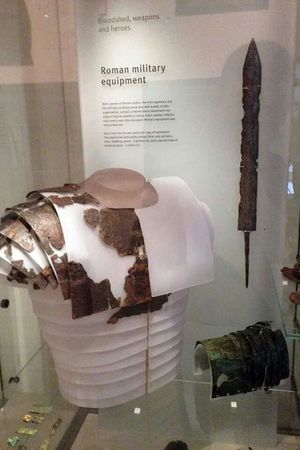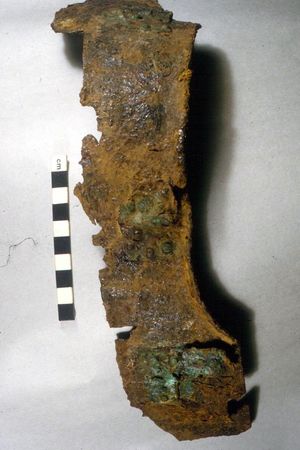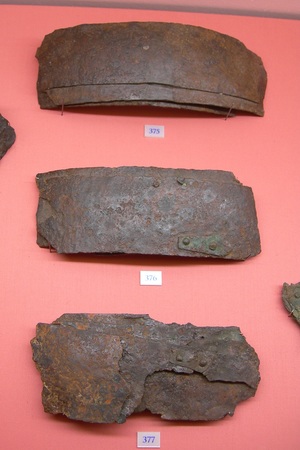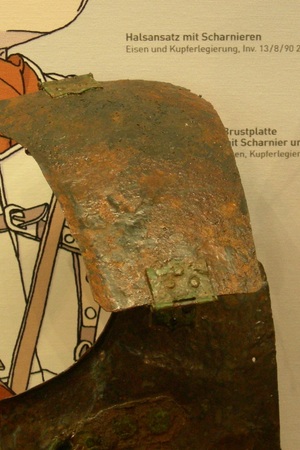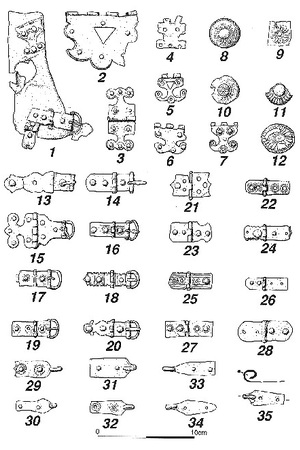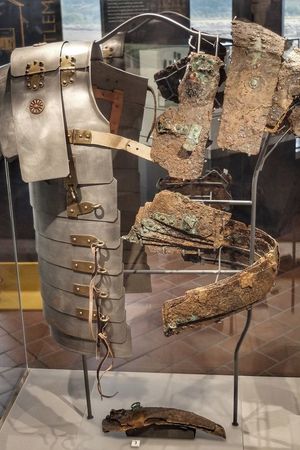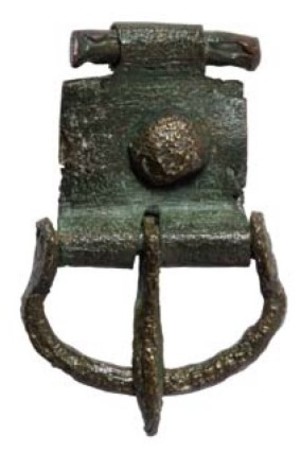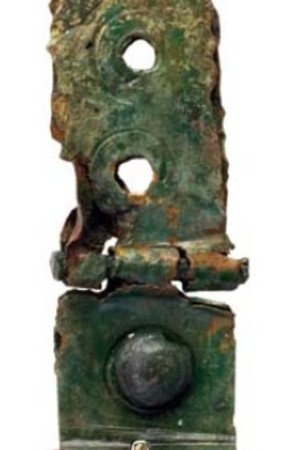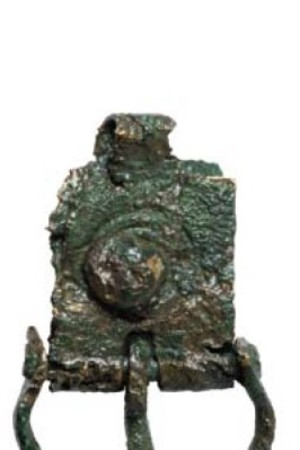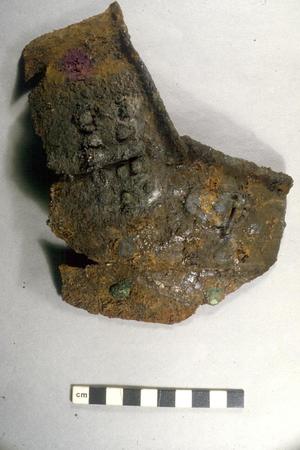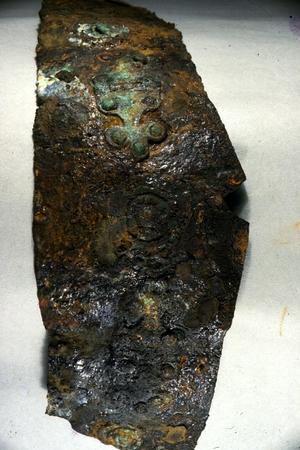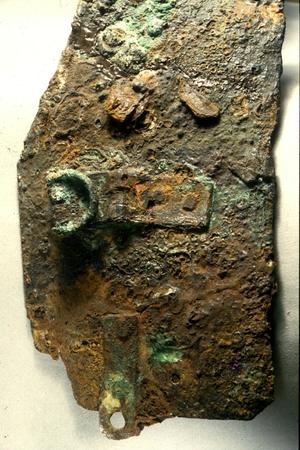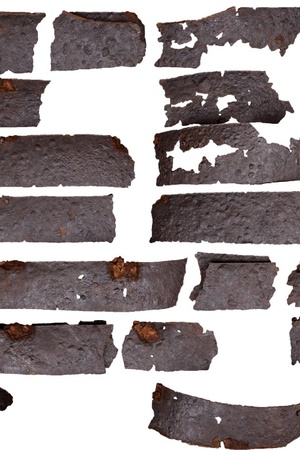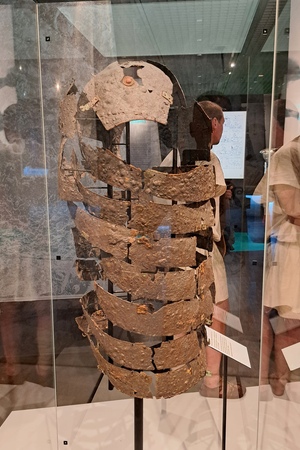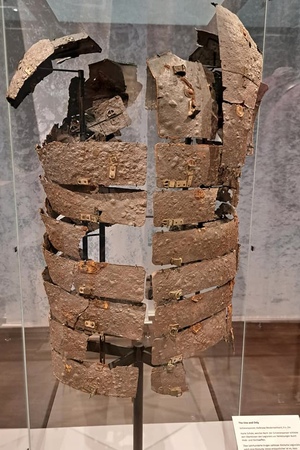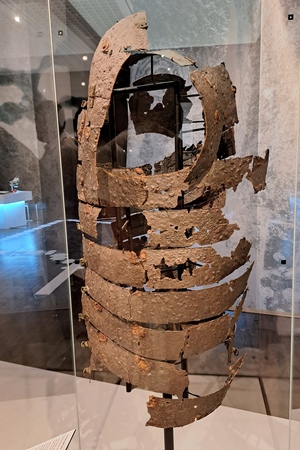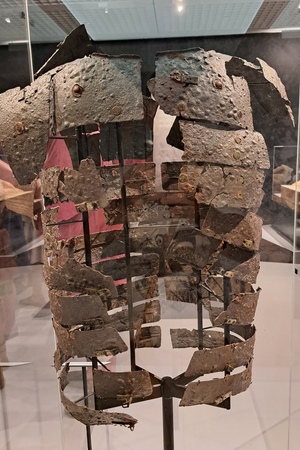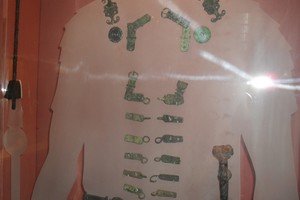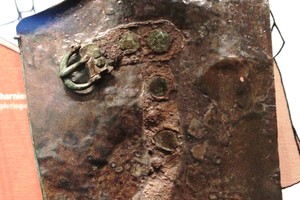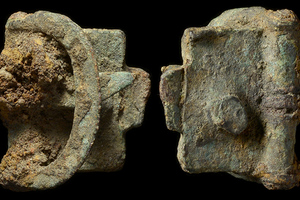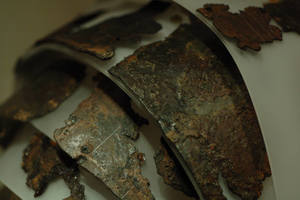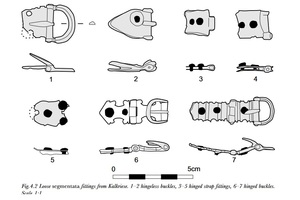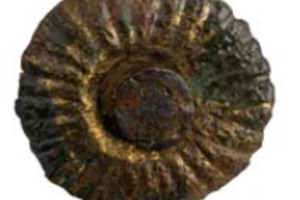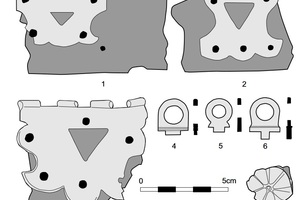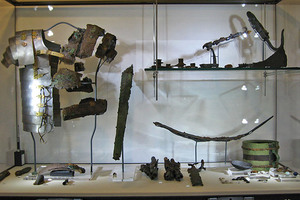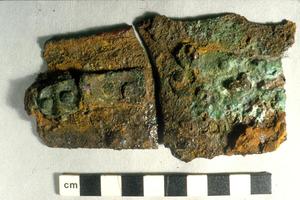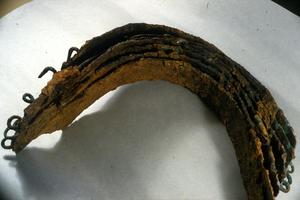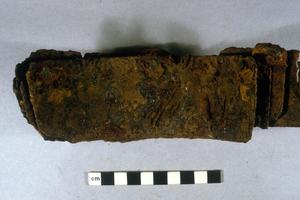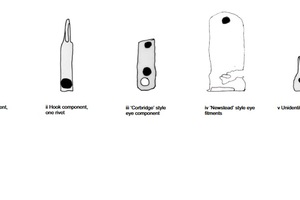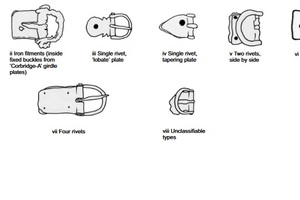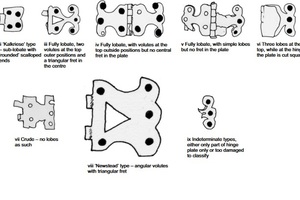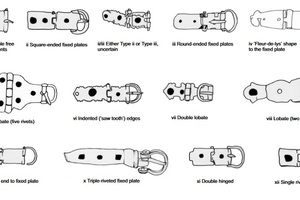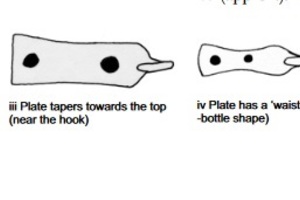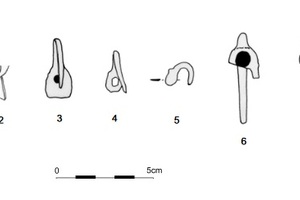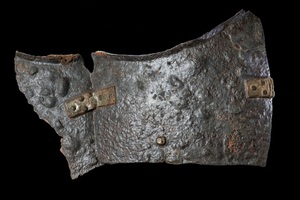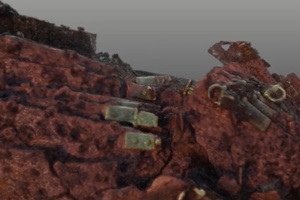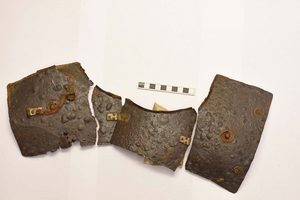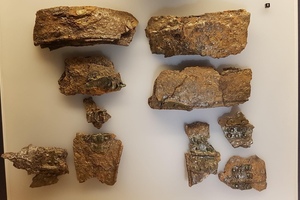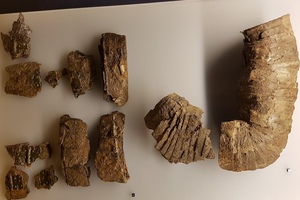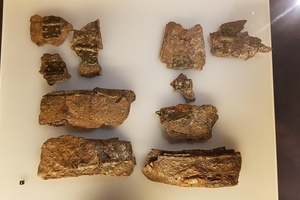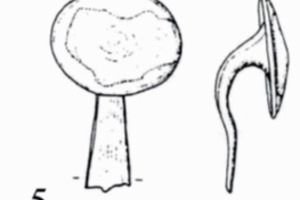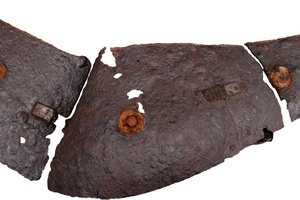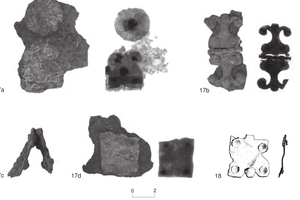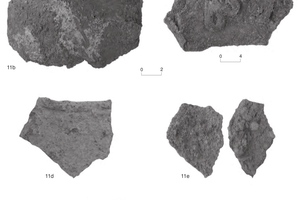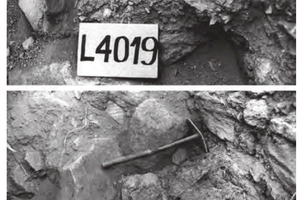Lorica segmentata
Lorica segmentata (lat. Lorica segmentate, lorica out of segments) – is an armor made out of metal segments, protecting torso and partially shoulders. Roman army used the armor approximately since the end of the Republic era to the 3 century CE.
The main lorica segmentata’s difference from other roman armours is its design – iron strip segments (which can be considered from the name), which are by pairs connected with leather straps on the chest and on the back. The construction wraps around legionary’s torso protecting it. Shoulders and upper back had additional armor plates. Those segments were interconnected by hooks or by straps or buckles.
History
There is no information, what was the exact name of the armor in ancient roman. In Victorian epoch, first Ancient Roman researches gave it name “Lorica segmentata”. There is another term – Lorica Laminata, but not all Historians recognize it, as the term is based on Latin word Lamina (sheet metal). Theory’s critics say, that there is only one known source of a such name “Lamina” in military context, written in berlin’s papyrus, legionary’s repot (probably, the legionary was from Legio II Traiana Fortis).
Lorica segmentata was convenient in storaging and transportation, as it can be easily disassembled and storaged it. In Roman Corbridge fort archeologists discovered wooden crate during archeological excavations. Inside there were armor segments, scorpio bolts, sword scabbard and spear pikes roped together. Probably, the crate was hidden by rapidly retreating fort legion.
Lorica segmentata weighted around 9 kg, so lorica segmentata was significantly lighter than traditional roman mail with double shoulders (12-14 kg). More than that, Lorica segmentata had the best possible protection for the torso from any kind of stabbing, slashing, blunting and also from ranged weapons.
Modern experiments show, that even bolt from small catapult (scorpio), can’t completely penetrate the exact lorica segmentata’s replica and wound legionary to death. Though, lorica segmentata has a disadvantage it offers no protection to lower torso part. The problem was partially solved by roman military belt cingulum, with a “cover” out of 4 to 8 leather straps – suspensors, covered in metal rivets, covering legionary’s groin. But such a protection was mostly nominal and didn’t protect from stabbing, unlike lorica segmentata itself.
Other nations’ segmented armors
Segmented armor was known before Romans. For example, there is an armour from Dendra, dating to Mycenae era (XV century BCE). As we can see, lower armour part wraps around in stipe circles, widening down, the upper part of the armour consists of pot-like cuirass, with attached on sides shoulders. The design protects warrior quite well, but lacks flexibility in battle, unlike lorica segmentata, which doesn’t restrain movement that much.
It also should be mentioned, that crupellariuses, mentioned by Tacitus, used lorica segmentata as well. Tacitus described crupellariuses as gladiators, gathered from enslaved Gauls and equipped according to Lugundic Gaul’s warriors’ traditions. They participated in Treveri’ rebellion under Florus and Sacrovirs’ command year 21 CE.
More than that, there is a depiction of Sarmatians wearing segmented armor on Trajans’Column. This shows us, that other tribes also have similar armor, but built differently.
Ancient roman army's segmented armor.
There is a theory, that Romans were inspired to create segmented armor by Hellenic armor type, depiction of which we can see in Domus Aurea.
Historians associate the appearance of lorica segmentata in roman army with Germanic Wars (year 12 BCE – year 12 CE) during Octavian Augustus reign, when there was a need to protect better legionary’s torso in battles with Germanic tribes. The earliest lorica segmentata’s fragments were found, where Battle of the Teutoburg Forest happened (year 9 CE) and the lorica segmentata is attributed to kalkriese type.
Throughout roman history, lorica segmentata experienced multiple modifications. Leather attachments – buckles and leather wires, were substituted for metal pins and pivots, which made armour sturdier and at the same time did maintenance and production a lot easier. The most common lorica segmentata types can be distinguished according to the origin of fining in following way:
• Kalkriese
• Corbridge
• Newstead
Kalkrize
Lorica segmentata Kalkriese is considered to be the earliest armor type (year 12 BCE – year 50 CE). It was found on Kalkriese’s hill, near the town Osnabrück, Germany. The main feature of the lorica segmentata is brass cover on the edges of metal plates. The lorica segmentata didn’t preserve entirely, but only in separate elements: chest plate and attachments.
In 2020 archeologists found full set of Kalkriese lorica segmentata. Despite bad preserving conditions because of sand and high soil acidity in Kalkriese, the armour preserved well. Bronze hooks, buckles and other attachment elements can be seen and recognized on the armor. Also, even small organic remains were found on the armor, like leather. The lorica segmentata is unique not only because it preserved well, but also because the lorica segmentata doesn’t have shoulders compared to later variants.
Corbridge A
Corbridge (year 40 CE – year 120 CE) is lorica segmentata, the most well studied type, as two well preserved lorica segmentata were found near Hadrian's Wall in 1964. The finding helped to understand better armor design and precise it. Earlier, the armour was known only by separate elements and depictions. There were two different lorica segmentata, with different attachments. That’s why there are two lorica segmentata types A and B. Type A features leather straps with buckles chest attachment.
Corbridge B
There is another found lorica segmentata type. Corbridge B features hooks chest attachment. The rest is quite similar to type A.
Newstead
Newstead is the latest lorica segmentata type (year 110 CE – year 250 CE). Compared to Corbridge, the construction is significantly eased, which is most likely connected with production process optimization. Brass decorations are minimized, and chest pieces are interconnected by common bolts. The lorica segmentata was found in Newstead, in the beginning of XX century.
Only legionaries and pretorians used lorica segmentata in roman army. Moreover , centurions or legates never used lorica segmentata (there are no preserved bas-reliefs with a such depictions). Auxiliaries, in their turn, as well as cavalry used lorica hamata (chain mail) and lorica squamata (scale armor).
In the 4 century lorica segmentata was removed from Roman army service. Vegetius points out, that the removal happened during Gratian’s reign, admitting with a regret, that his contemporary footmen are fighting without cuirass or even a helmet. Usually, historians connect that with Roman empire decline and with a strong army barbarization.
Reenactment
The main reenactment period of our club is middle of the I century CE – beginning of the second century (year 50 CE – year 125 CE). So, according to that, lorica segmentata which fits best for an early legionary is Corbridge, and lorica segmentata which fits best for later periods (the beginning of the second century) - Newstead. To make lorica segmentata you need – iron, brass (bronze), leather, rivets.
Similar topics
Legionnary, Lorica Squamata, Cingulum, Lorica hamata, Gladiator, Krupelarium
Literature
- Флавий Вегеций Ренат. Краткое изложение военного дела.
- M. C. Bishop. Lorica Segmentata Volume I: A Handbook of Articulated Roman Plate Armour. — Armatura Press, 2002. (англ.)
- Коннолли П. Греция и Рим. Энциклопедия военной истории / Перевод С. Лопухова, А. Хромова.. — «Эксмо-Пресс». Москва, 2000.

 Gallery-Bas-Reliefs
Gallery-Bas-Reliefs







 Gallery-Archeology
Gallery-Archeology






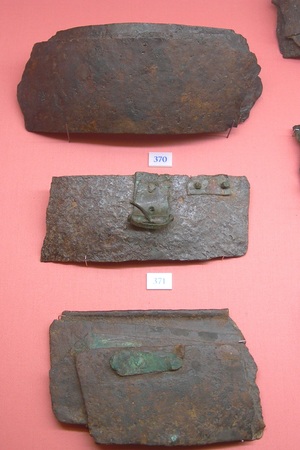 Lorica segmentata’s parts, Cortesia Archäologisches Museum Carnuntinum - Bad Deutsch-Altenburg-A, I-II century CE
Lorica segmentata’s parts, Cortesia Archäologisches Museum Carnuntinum - Bad Deutsch-Altenburg-A, I-II century CE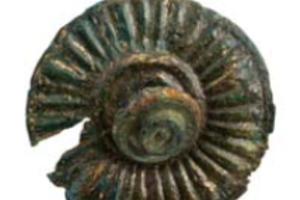 Corbridge lorica segmentata’s decoration, catalogue of Croatian part of the Danube Limes, I century CE
Corbridge lorica segmentata’s decoration, catalogue of Croatian part of the Danube Limes, I century CE